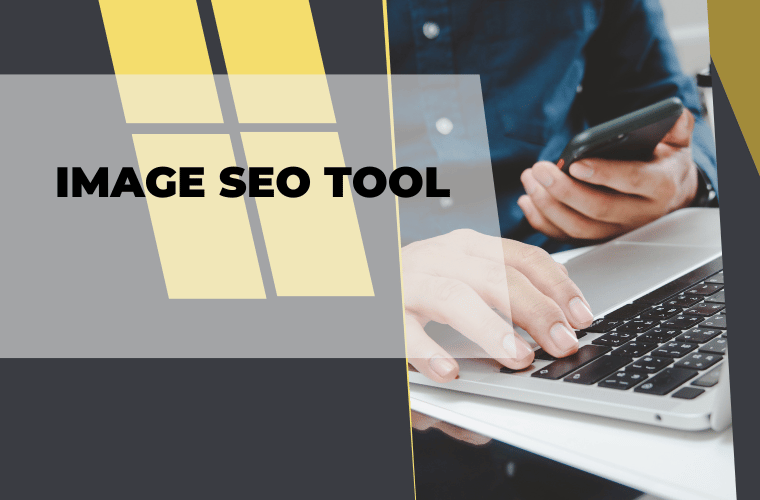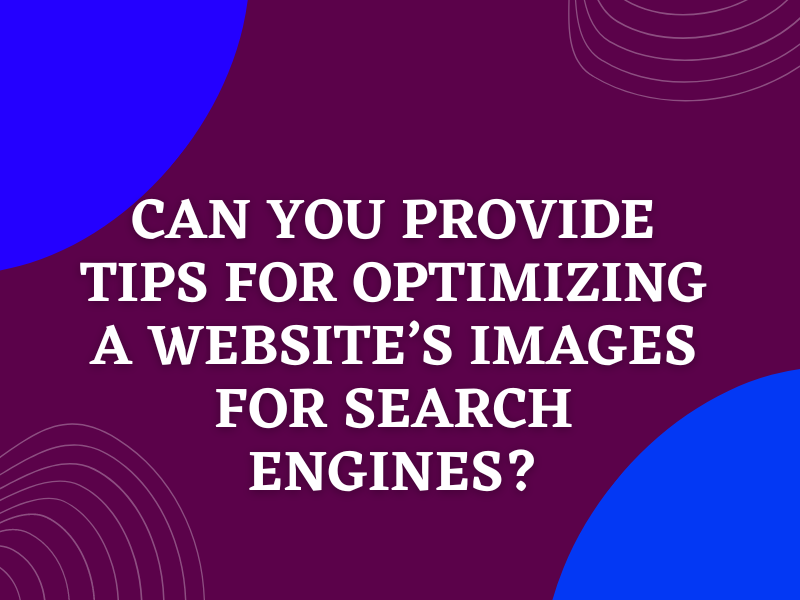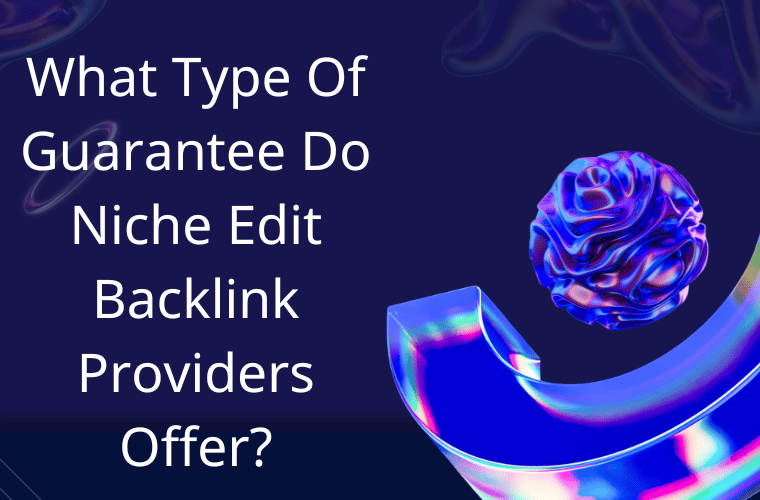Can You Provide Tips for Optimizing a Website’S Images for Search Engines?
When optimizing a website’s images for search engines, it’s essential to remember that both the quality and quantity of an image are important factors. Images should be high-quality and relevant to the website’s content to rank well in search results. In addition, websites should have many photos to show search engines that they are comprehensive and informative.
- Define the goals for optimizing images on your website.
- What do you want to achieve with image optimization? 2
- Identify which images are the most important to optimize for search engines.
- This will likely be your product images, but it could include other critical pictures on your site, like your company logo or author photos.
- Please ensure all your images are correctly tagged with keywords that describe the image and its content.
- Use descriptive filenames for all of your images.
- Don’t use generic filenames like “image1
- Jpg” – instead, use something that describes what’s in the photo, like “pink-flowers-in-springtime
- jpg” 5
- Optimize the size of your images so they load quickly on a page without slowing down the rest of the content.
- Add alt text to your images so search engines can understand what they depict and index them accordingly.
How Can You Optimize Your Images for Search Engines?

It’s no secret that images are an essential part of any website. Not only do they help break up text and make your site more visually appealing, but they can also help you rank higher in search engines. That’s right – optimizing your images for search engines can help you attract more traffic and improve your site’s SEO.
So how do you go about Optimizing Your Images for Search Engines? Here are a few tips:
1. Use descriptive file names – When you save your images, use descriptive file names that include keywords relevant to your topic. For example, instead of saving an image as “IMG_1234.jpg”, try something like “yoga-pose-for- beginners.jpg.”
2. Include keywords in your alt text – Whenever you insert an image into a blog post or web page, include relevant keywords in the alt text field. This helps search engines understand the idea and index it accordingly.
3. Compress your images – Large image files can slow down your website, so it’s important to compress them before uploading them to your site. Many free online tools can help you with this task, such as TinyPNG or Kraken Image Optimizer.
4 Use a CDN – A content delivery network (CDN) is a system of distributed servers that deliver webpages and other web content to users based on their geographic location.
Using a CDN can help speed up the delivery of your website’s content, including images, by caching them on multiple servers worldwide. One popular CDN is Cloudflare. 5Choose the correct format – There are many different image formats available (JPEG, PNG, GIF, etc.), but not all of them are equally suitable for all purposes.
JPEGs are generally best for photos, while PNGs work well for graphics with fewer colors. GIFs should only be used sparingly due to their large file size. 6Make sureyourimagesareresponsive- With more and more people accessing the internet from mobile devices, it’s essential to ensure that your images are responsive, meaning they resize automatically to fit the screen they’re being viewed on.
You can learn how to makeImagesresponsivewith CSSorJavascript or use a plugin if you’re using WordPress.
How Do I Create a Search Engine Optimization for My Website?
There are several things you can do to improve search engine optimization (SEO) for your website. These include
Use keyword-rich titles and descriptions
Use relevant and accurate keywords in your web pages’ title and description tags. This will help potential customers find your site more quickly when they search using those keywords.
Optimize your website’s content
In addition to using keywords throughout your website’s content, you should also focus on creating well-written, informative, and engaging content. This will not only please visitors but also encourage them to spend more time on your site, a factor that search engines consider when ranking websites.
Promote natural link building
One way to increase the number of links pointing to your website is by promoting natural link-building. This can be done by creating great content that other websites will want to link to or by reaching out to other web admins and asking them if they would be interested in linking to your site.
Use social media
Another effective way to improve SEO is through social media platforms such as Twitter, Facebook, and Google+. Creating profiles and sharing links to your website on these platforms can help increase its visibility online and attract more visitors from potential customers who may have yet to find it.
How Do I Optimize Images to Speed Up My Website?
It’s no secret that images can be heavy files that take a long time to load, especially if you have many on a single page. This can be frustrating for your visitors, who may give up and go elsewhere if they wait too long for your page to load. That’s why optimizing your images is essential so they load quickly and efficiently.
There are several ways to optimize your images:
- Resize Your Images:One of the simplest ways to optimize an image is to resize it before uploading it to your website. If an image is much larger than it needs to be, it will take longer to load. By resizing an image to the dimensions you need, you can significantly speed up its loading time.
- Compress Your Images: Another way to reduce an image’s file size is by compressing it. This can usually be done without affecting the quality of the image too much, which means visitors won’t notice the difference, but your pages will load faster because of it.
- Use Caching Plugins: If you’re using WordPress for your website, there are various caching plugins available that can help speed up loading times by caching or storing specific files on the user’s computer, so they don’t have to be loaded from scratch each time they visit your site.
- Optimize Your Website’s Code also affects how quickly its pages load. If there is unnecessary or inefficient code, this can slow things down considerably. You should ensure that your website’s code is clean and well-organized.
Why is It Important to Optimize Images for Websites?
It is important to optimize images for websites for several reasons. One reason is that it can help speed up your website’s loading time. If your website has a lot of unoptimized images, it can take longer to load, leading to people leaving before it even finishes loading.
Another reason is that optimized images are better for search engine optimization (SEO). When your website has images that are properly optimized with the right keywords and alt text, it can help your website rank higher in search results. Finally, optimized images can help improve your website’s overall look and feel.
When all of the images on your site are high-quality and adequately sized, it gives off a professional impression to visitors.
Image SEO Tool
If you run a website, blog, or online store, you know the importance of ranking high in Google search results. One of the best ways to improve your ranking is through image optimization. Image SEO is optimizing images for search engines to appear higher in Google image search results.

Optimizing images for search can increase your website’s traffic and improve your chances of appearing in Google’s top 10 search results. Several factors go into image optimization, including file name, file size, alt text, and title tags. However, one of the most critical aspects of image SEO is creating keyword-rich titles and descriptions.
Regarding Image SEO, there are a few simple rules to follow:
- Use descriptive file names: When you save an image, use a descriptive filename that includes keywords related to your topic. For example, if you have an idea about “dog training,” you might want to use a file name like “dog-training-collars.jpg.”
- Optimize Alt Text: The alt text is the text that appears when an image doesn’t load on a web page. It’s also what Google uses to identify what an image is about when indexing websites for search results. Add relevant keywords and phrases to your alt text so that Google knows what your pictures are all about.
- Resize Images: Large images can slow down your website, impacting your ranking on Google. Be sure to resize any photos before uploading them onto your site, so they’re no longer than 1000 pixels comprehensive (if possible). You can also use compressed file types like JPEGs or PNGs, which will help reduce the size of larger files without sacrificing quality too much.
What is Image SEO
Image SEO is optimizing images to rank higher in search engine results. Image SEO consists of both on-page and off-page optimization techniques like traditional SEO.
Some of the on-page optimization techniques include:
Using descriptive file names for your images -Using relevant keywords in your image’s ALT text Making sure your images are the correct size.
Off-page image optimization can be done by building links to your images from other websites. This can be done by: -Adding your pictures to social media sites such as Facebook, Twitter, and Pinterest.
Including your images in blog posts or articles.
Image SEO Best Practices
You can do several things to optimize your images for search engine ranking. Here are some image SEO best practices:
- Use descriptive filenames and alt text: Make sure to give your images descriptive filenames (e.g., cat.jpg) and alt text (e.g., a photo of a black cat). This will help search engines understand what the image is about and index it accordingly.
- Compress your images: Large image files can slow down your website, so compress your images before uploading them to your site. You can use an online tool like TinyPNG to compress your images without losing quality.
Google Image SEO
Google Image Search is a powerful tool that can help your website stand out from the crowd. Optimizing your images for Google can ensure that your site appears higher in search results and attract more traffic.
Here are some tips for optimizing your images for Google:
- Use descriptive filenames and alt text. When you save your images, use descriptive filenames and alt text. This will help Google understand the idea and index it properly.
- Choose the correct file format. JPEG is the best file format for most images, but PNG or GIF may be better in some cases. Choose the correct file format for each image to ensure optimal quality and compression.
- Optimize your image sizes Images that are too large or too small can slow down your website and hurt your chances of ranking high in Google search results. Optimize your image sizes, so they load quickly and don’t take up too much space on your web server. You can use an online tool like Kraken.io to optimize your images automatically.
- Use a content delivery network (CDN). A CDN helps deliver your images faster by distributing them across multiple servers worldwide.
SEO Image Optimizer Online
If you want your website to rank higher in search engine results, you must ensure that your images are correctly optimized. Fortunately, several online tools can help you with this task. Here is a look at some of the best SEO image optimization tools available:
- ImageOptim is a free tool that can help you optimize your images for the web. It’s available for both Mac and Windows and is really easy to use. Drag and drop your images into the interface, and ImageOptim will automatically compress them without losing quality.
- JPEGmini is another excellent tool for optimizing images for the web. It reduces the file size of your JPEG images while keeping their quality intact. This means that your pages will load faster, which is suitable for search engines and visitors. You can try JPEGmini for free, but there is also a paid version with additional features if you need them.
- Kraken Image Optimizer is an online tool that offers lossless compression for all image files (including JPEG, PNG, GIF, and SVG). This means you can reduce your images’ file size without losing any quality whatsoever.
Kraken has free and paid plans depending on how many images you need to optimize per month.
What is the Best Image File for SEO
Generally, the best image file format for SEO is JPEG. This is because JPEGs are lossy files, meaning they compress data to reduce file size. This compression can result in some visual artifacts, but the tradeoff is worth it for most users since the more minor file size results in faster loading times.
Additionally, JPEGs support EXIF data, which search engines can use to index and catalog images.
Best Image Size for SEO
Generally, images shouldn’t be any larger than they need to be. That said, image size is important for two main reasons for SEO: load time and keyword optimization. Load time is necessary because it affects your site’s “bounce rate.”
If a page takes too long to load, visitors will likely leave before it even finishes loading. This tells Google that your site isn’t providing a good user experience, which can hurt your ranking. Keyword optimization is essential because you want Google to know what your images are about so they can be appropriately indexed and displayed in search results.
To do this, you must ensure your images are named appropriately and have relevant ALT text.
Image Optimization
Image optimization is a process of reducing the file size of an image without affecting its quality. This is done by removing unnecessary data from the image file, such as metadata or comments. Image optimization can also be achieved by reducing an image’s dimensions and the amount of data required to store the image.
There are many benefits to optimizing images for web use. One advantage is that it can help to speed up website loading times. This is because smaller image files take less time to download than larger ones.
Optimizing images can also save on bandwidth costs, as smaller files use fewer data when transferred over the internet. There are several ways to optimize images for web use. One way is to use an online tool such as Kraken or TinyPNG, which will automatically reduce the file size of an image without affecting its quality.
Another way is to manually adjust the settings in your photo editing software, such as Photoshop, to reduce the file size of an image. If you want to learn more about optimizing images for web use, plenty of resources are available online and in print. A quick search on Google will reveal a wealth of articles and tutorials on this topic.
Conclusion
If you want to ensure that your website’s images are optimized for search engines, you can do a few things. First, make sure that your images have relevant and descriptive file names. Second, use alt tags to describe the content of your photos.
And finally, don’t forget to compress your images so that they load quickly. Following these tips can help improve your website’s ranking in search results.







